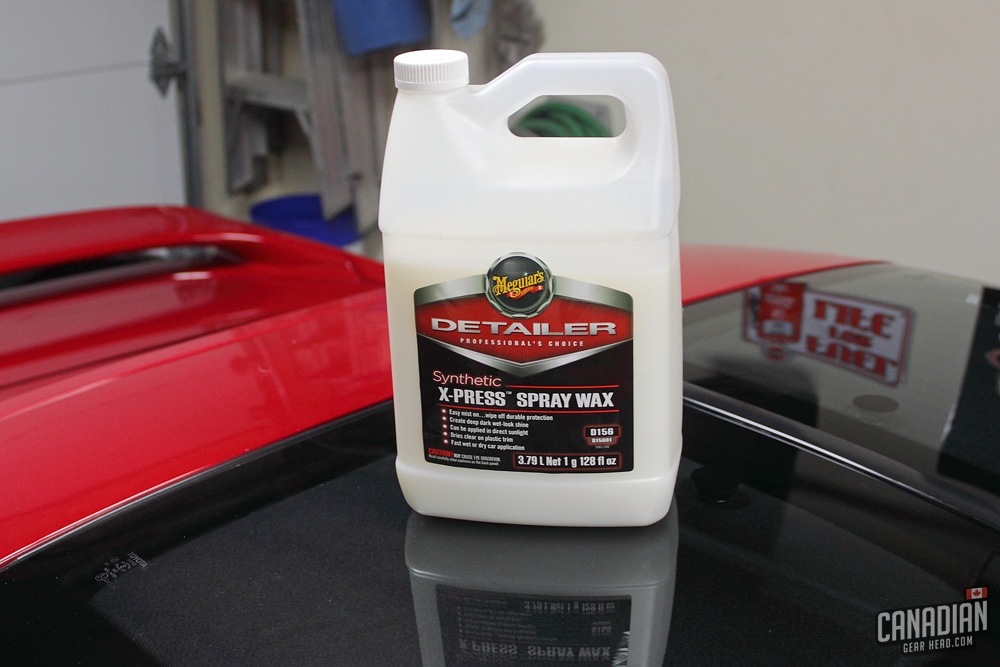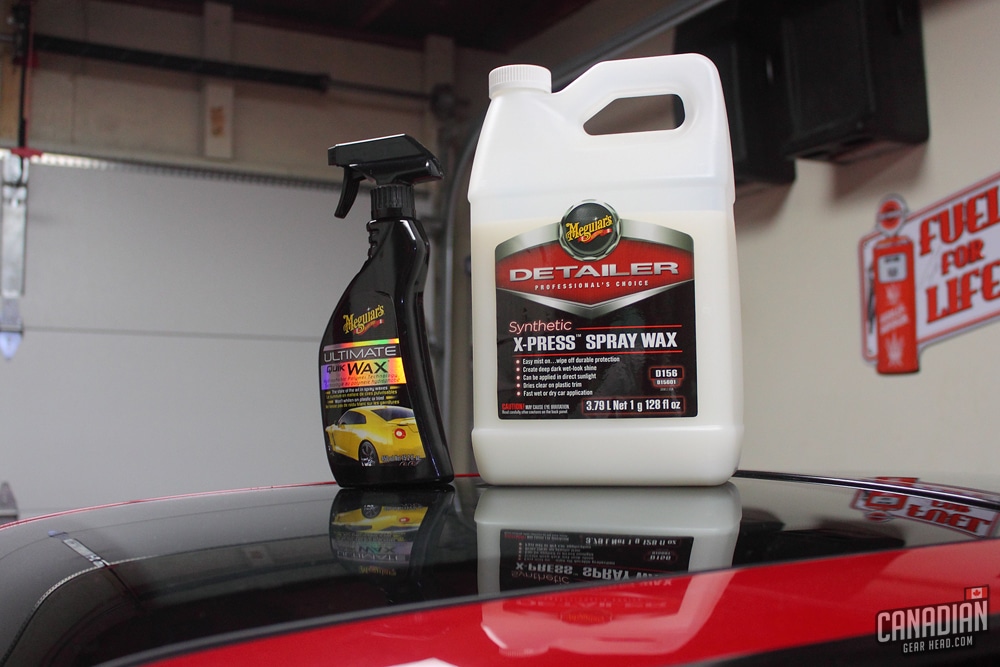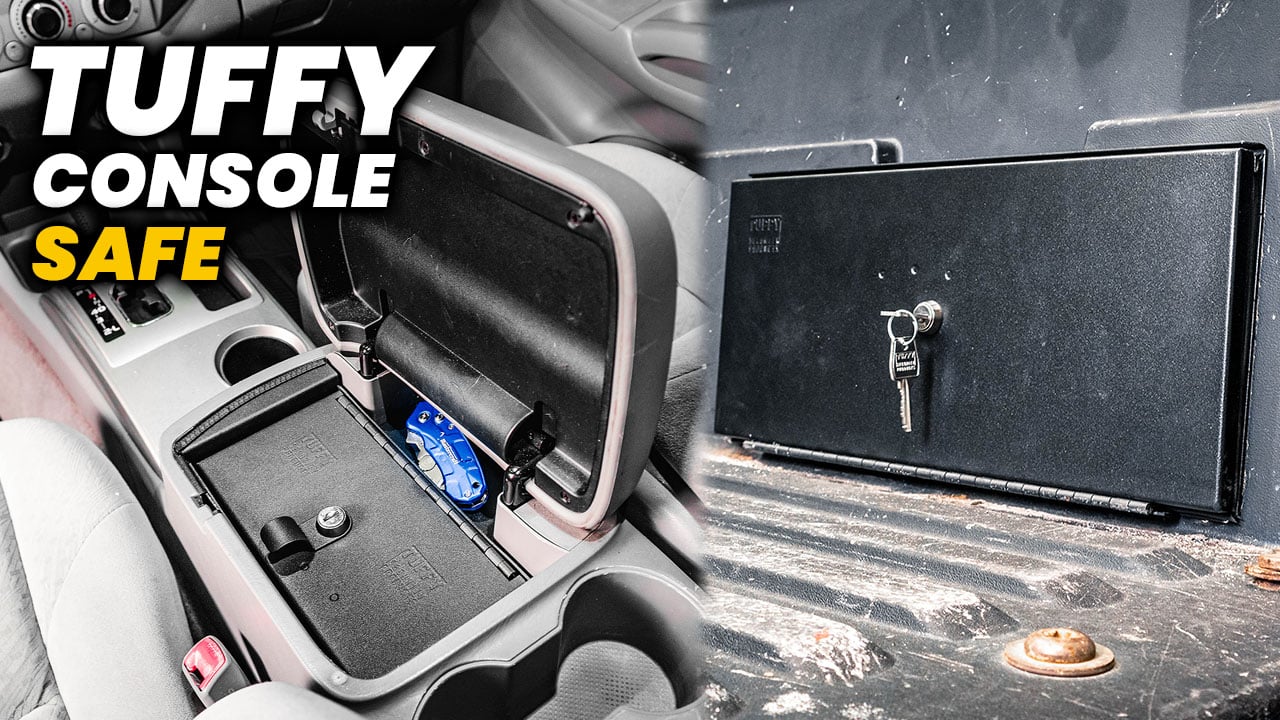If you enjoy taking care of your vehicles, here’s a helpful tip: you don’t need an entire shelf full of products to be able to make your car look awesome. There are a number of products out there that work great for more than just their intended use. A good spray wax is one of them.
Spray waxes were originally intended to be used as a time saving option instead of a typical hand wax. As time went on, many users (mainly savvy pro detailers that are constantly looking for ways to stay profitable) have found a few off label uses for spray wax.
We can learn a lot from guys like Darren at AutoFetishDetail, Scott at Dallas Paint Correction and Jimbo with the Auto Detailing Podcast. These guys are constantly thinking outside the box and trying new things. They aren’t going to risk a lawsuit after wrecking a customer’s Ferrari, so it’s safe to say we can trust what they say.

The product I’m referring to in this article is my all time favorite spray wax: Meguiar’s X-press Spray Wax (D156). I’m sure these tips apply to most of the spray waxes on the market, but just to be clear – I haven’t tested all of them. When it comes to trying something new, always test somewhere inconspicuous first.
Meguiar’s X-press Wax is a professional grade product that’s only sold in one gallon jugs. Don’t fear though! There’s a ton of value in buying a gallon of this stuff, even for a hobbyist detailer with a single car. As you read on, you’ll see a few other ways to use it so it might just replace some of your other products. If you still don’t think you’ll be able to use a whole gallon, I have a secret for you:
Tip: Meguiar’s X-press Wax and Ultimate Quik Wax are the same product!
Yes, that’s right, the bottle of spray wax you can find at any auto parts store is essentially the same thing. I was curious about this after having tested out both products, and my suspicions were confirmed:
“Like others have already stated, it’s not a concentrate of UQW, but essentially a repackaging of. The scent is more like M135 Synthetic Spray Detailer rather than UQW however.” – Michael Stoops from Meguiar’s.
That’s straight from the horse’s mouth. In my experience, they work the same but smell differently. The consumer version in the small bottle seems to have a pleasant scent added, while the pro version has more of a chemical smell.

Everyone knows that spray waxes make waxing a vehicle quick and easy. You should be able to make it around your vehicle in about 10 minutes. Some people (myself included) like to use them as a drying aid when washing.
After rinsing the soap off your car, spray the wax on the wet panel before drying with a towel. This helps to lubricate the surface to avoid swirl marks, makes it easier to dry with a streak-free finish, and adds a bit of protection. It’s also a quick way to boost shine and protection after using an all-in-one polish. I like to do this after polishing with HD Speed.
Let’s get into the best off label uses for spray wax:
1. Use it as a rain repellent for your windows
Believe it or not, a non-staining spray wax works great on your windows and windshield. It offers the same hydrophobic properties that make water bead on your paint, which makes rain slide off the glass at speed. Spray wax might not last as long as dedicated rain repellent products, but it also won’t make your wipers chatter and squeal when it starts to wear off.
2. Give your rinseless wash a boost
The process is similar to how you would use spray wax as a drying aid for a traditional wash. Just spray it on the wet panel before drying. Most rinseless washes can be buffed to a streak-free finish without any help, but a bit of spray wax will improve the level of protection on your vehicle. This will make it easier to clean next time and add some extra shine and gloss. I find that Optimum No Rinse and Meguiar’s X-press Wax work very nicely together.
3. Dress and protect your engine bay plastics after cleaning
Most people will use a specific vinyl, rubber, and plastic dressing for this. If you’re happy with the natural satin finish of the plastics in your engine bay though, spray wax will do the job just fine. Spray wax will leave a clean finish on these and help to keep dust and dirt from sticking to them in the future. If your engine bay has been cleaned properly in the past and is only slightly dusty, spray wax will also work as a touch up to refresh the clean look.
4. Protect your matte finish wheels
Anyone that has washed a car with matte or satin finish wheels knows how hard it is to eliminate water spots. Water spots are inevitable after washing because there’s so many places for water to hide (lug nuts, inside details, the edge of the tire etc).
A matte finish is very porous and when water dries on it, you have to really scrub hard to get rid of the spot that’s left behind. Using spray wax after washing or as a drying aid on your matte wheels will make a huge improvement when it comes to dealing with water spots.
Warning: spray wax might change the appearance of your matte or satin wheels. In my opinion, a tiny amount of extra gloss on a satin wheel looks much better than a wheel with lots of white water stains.
5. Protect and dress your leather seats
Spray wax doesn’t just work on the exterior of your vehicle. Your leather seats are clear coated just like your paint. Spray wax will help to protect your leather from UV rays and unlike greasy “conditioners”, it will make it harder for them to attract dirt. For more details on this topic, check out my post for the truth about leather conditioners.
6. Dress your interior’s plastic trim
Possibilities for using spray wax in your interior doesn’t stop with your leather seats. As a matter of fact, you can use it on nearly all of your interior surfaces aside from your carpet or fabric seats. If you prefer a wet, glossy looking interior, this option isn’t for you.
Spray wax will leave a realistic, satin finish to your plastics and protect them from UV rays. Make sure to spray it onto your towel before wiping rather than directly at the surface to avoid excess spray in buttons and cracks. You can also use it to help with fingerprints on your touch screens, although I personally like to keep these as bare as possible, just in case.
7. Clean and protect your motorcycle gear
Depending on your location, bugs can be a very annoying issue when it comes to your motorcycle gear. You can use spray wax on your helmet and leather jacket to wipe off bugs after a ride. I like to use my pre-rinse dilution of Optimum No Rinse for heavier cleaning and on goggles, but spray wax will also do the trick.
8. Clean your detailing equipment
Your vacuum, leaf blower, and buffer will get dirty and dusty as you use them. Whether you like to keep your stuff looking new for as long as possible, or detailing is your job and you want to maintain a professional image, you need to wipe these things down once in a while. Spray wax is great for this and gives the plastic a nice clean finish.
9. Use it on mountain bikes
For some of us, cars aren’t the only thing we like to clean and care for. Mountain bikes are built with the same materials found on cars, and therefore can be treated the same. I actually wouldn’t be surprised if some dedicated “shine” products for mountain bikes are really just repackaged bottles of spray wax.
There are two areas you need to avoid using spray wax on though – your brakes and your points of contact. If your bike has traditional brakes, you need to avoid getting any spray wax on the rim of the wheel. If it has disc brakes, obviously you need to avoid the disc but the rim is fair game. Your points of contact (grips, pedals, and seat) should also be avoided. It can be very unsafe for any of these areas to be slick or slippery, which can cause a crash. And believe me when I say, mountain bike crashes hurt!

How spray waxes compare to carnauba wax and paint sealant
In general, spray wax tends to offer lesser results and protection than other products. They make up for this by being quick and easy to use. Waxes and sealants can be divided into two different types: carnauba based (natural) and synthetic products (man-made).
Most higher end paste waxes use what’s known as #1 yellow carnauba. This is the wax found on the leaves of a specific palm tree in Brazil. The wax protects the leaves from sun damage and repels rain. Since the rain falls off the leaves instead of being absorbed by them, it falls to the ground and automatically waters the roots of the tree. Cool stuff!
You will not find a better looking product for your paint than carnauba wax. It offers the deepest, wettest, richest look possible. That’s why this wax is so popular among the show car crowd (wax isn’t dead!). The downside is that it doesn’t protect as well or last as long as a synthetic paint sealant. A carnauba wax usually doesn’t last more than 2 months.
Paint sealants are synthetic, or man-made. These are formulated by chemists to do the specific job of protecting the paint on your vehicle. They use polymers that bond to your paint, making this a much more durable but less natural looking option. Paint sealants can offer you anywhere from 6 months up to a year of protection.
Paste waxes and synthetic sealants are the ones to use for your base of protection. Think of spray wax as a “maintenance wax” that you use to top up the already existing protection on your paint. How you choose to use it (periodically by itself or as a drying aid with every wash) is completely up to you.
Should you use spray wax on a ceramic coated vehicle?
Absolutely not! Ceramic coatings offer far better protection than any spray wax, paste wax, or synthetic sealant. Although the use of these products will not harm the coating in any way, you should still avoid them. What will happen if you put wax on your coating? It will sit on top and cover up any of the coating’s water beading properties with its own. You paid good money for the top of the line in protection, there’s no reason to cover it up with an inferior product!

How to avoid streaking with spray wax
This is a common complaint that people have, and they always blame whatever product they’re using. Some products are in fact more likely to leave streaks behind. But more often than not, it’s a problem with the user’s technique.
You might think that “if some is good, more must be better!” but that’s not always the case, especially in the detailing world. For example, a single spray of wax should be enough to do a fender or a door if you’re using it as a drying aid. Overusing a spray wax will definitely increase the risk of streaking. A little goes a long way.
If you still find you’re having issues with leaving streaks behind, here’s another simple fix: grab a second towel. Spray it on, wipe the panel, then switch to your 2nd towel and buff to perfection. This same trick also works great with window cleaners!
How can you remove spray wax?
If you decide you need to remove spray wax from your paint for whatever reason, don’t fret. Unlike ceramic coatings, waxes and sealants can be removed easily. The fact that spray wax is the least durable of the bunch makes it the easiest to remove.
You can wait it out for a few washes and let it wear off itself, or you can use a mixture of water and isopropyl alcohol (either 70% water, 30% IPA or 50/50 depending on how strong you want it). Spray the panel and wipe it with a clean microfiber towel and your spray wax should be history.
Now you can see why I told you that you’ll get plenty of use out of a gallon of spray wax. You can use it on almost everything! In my opinion, anyone that cares for their vehicle should have a bottle of spray wax in their arsenal. If you found this post helpful, please share it with your friends!

Tim is the creator of Canadian Gearhead. His experience with auto detailing and working for Toyota shows through all of the articles posted here. He runs the Canadian Gearhead site and YouTube channel full-time now and currently owns a 2007 4runner, 2006 Tacoma, and 1991 MR2. Read more about Tim:





Leave a Reply